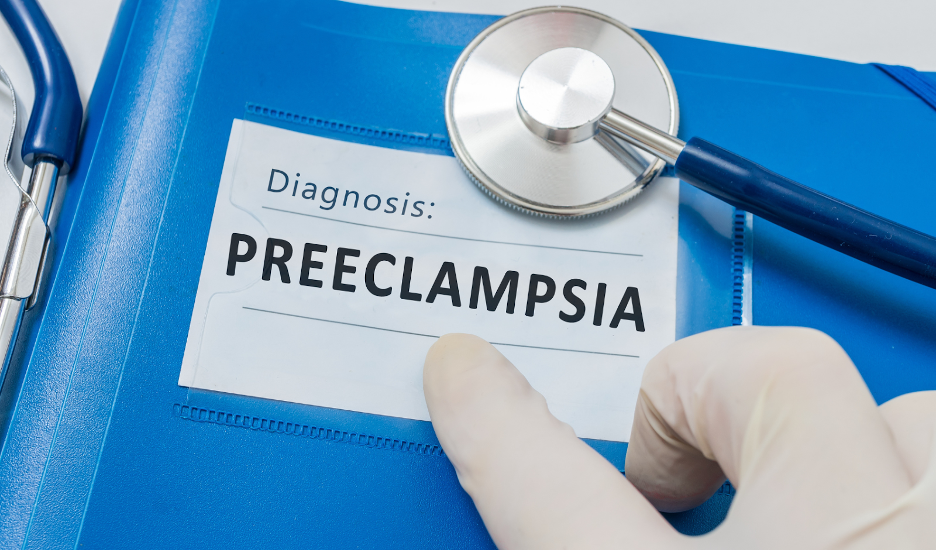Preeclampsia and BIPOC Pregnancy: Advocating for Yourself
By Gina Michiko Craig
Maternal health and impact on health disparities for Black, Indigenous, and People of Color (BIPOC) populations and other underserved patients are areas of concern at Diverse Health Hub (DHH). Awareness must be increased about preeclampsia, a critical medical issue during and sometimes after pregnancy. Here’s a look at preeclampsia and potential risks to BIPOC and underserved patient pregnancy.
What Is Preeclampsia?
Preeclampsia is a serious condition that impacts blood pressure during pregnancy. Classic symptoms of preeclampsia include high protein levels in the body and high blood pressure. Most commonly occurring after the 20th week of pregnancy, preeclampsia is a danger to both the pregnant mother and the baby and must be monitored and treated by a healthcare professional. The condition places stress on the heart and other body organs and can cause organ damage.
Risk factors for the condition of preeclampsia include:
Obesity, especially in body mass index of 30 or higher
Autoimmune disorders like lupus
History of diabetes, kidney disease, or high blood pressure
Expecting multiple babies
Family history of preeclampsia
First pregnancy
Polycystic ovary syndrome
Under age 20 or over age 35
Anemia during pregnancy
Thrombophilia
Obstructive sleep apnea
Sickle cell disease
In-vitro fertilization (IVF) or other assisted reproductive technology
Symptoms of preeclampsia include:
Abdominal pain on the right side
Headaches
Shortness of breath
Light sensitivity or blurry vision
Dark spots in your vision
Swelling in your face and hands
If preeclampsia is not properly controlled, it can progress to eclampsia that can cause coma or seizures.
Does Ethnicity Impact Preeclampsia Risk?
A recent clinical study conducted by Johns Hopkins Medicine showed that Black women born in the U.S. had a higher rate of developing preeclampsia in comparison to Black women who live in the U.S. but were born in a foreign country. Further examination of the study data showed that the gap between the preeclampsia risk lessened the longer that foreign-born Black women lived in the U.S. The study researchers concluded that race alone could not account for the higher preeclampsia rate and that the findings support a combination of social, cultural, and biological factors that cause higher preeclampsia.
What Is the Mortality Rate of Preeclampsia Around the Globe?
The incidence rate of preeclampsia varies around the world. The World Health Organization (WHO) has estimated the preeclampsia incidence rate to be seven times higher in developing countries. Africa is estimated to have a 5.6 percent rate of preeclampsia compared to 1 percent in Eastern Mediterranean countries. Worldwide, preeclampsia and eclampsia account for 10 to 15 percent of direct maternal deaths in low-income and middle-income countries. And low-income and middle-income countries comprise 99 percent of maternal deaths worldwide. Income level can also impact the likelihood of complications from preeclampsia in countries where income can impact access to healthcare.
Additionally, the effects of preeclampsia do not always end with the expectant mother. If preeclampsia impacts placental blood supply, it can sometimes decrease intrauterine growth and lead to preterm birth. Preterm birth can sometimes result in infant death, especially in low-income countries. About 10,500 babies in the U.S. die each year as a result of preeclampsia. And an estimated half a million babies around the world die due to preeclampsia each year. In cases when the baby does not die due to preeclampsia, sometimes the baby can suffer from lifelong complications like learning disorders, deafness, blindness, cerebral palsy, or other serious conditions.
Key Takeaways for Advocating for Your Own Health
If you have any of the risk factors for preeclampsia or are unsure if you do, make sure to ask your doctor if you need testing to determine your risk. There are several actions that pregnant women and those advocating on their behalf can do to prevent preeclampsia including:
Write to your U.S. Senator or Congressperson to advocate for more funding for preeclampsia research.
If you have a preeclampsia risk factor, print the list of risk factors to take with you to your doctor to discuss at your appointment.
Ensure that your blood pressure is checked at each checkup during your pregnancy.
Donate to a credible organization working to raise preeclampsia awareness like the Preeclampsia Foundation.
If you have an experience to share of when you experienced a health disparity when you raised a concern about preeclampsia, contact us at DHH.
Preeclampsia Resources
Check out these other preeclampsia resources to build your knowledge and to raise awareness about the condition.
Preeclampsia and High Blood Pressure During Pregnancy
High Blood Pressure in Pregnancy
High Blood Pressure in Pregnancy (en español)
Preeclampsia is a serious condition during pregnancy that needs more awareness and research funding. We will continue to provide more maternal health updates. Stay tuned for more reports about improving awareness and support of underserved patients with maternal health concerns.
Sources
Racial and Ethnic Disparities Continue in Pregnancy-Related Deaths. Centers for Disease Control and Prevention website. Accessed July 9, 2024. https://archive.cdc.gov/#/details?url=https://www.cdc.gov/media/releases/2019/p0905-racial-ethnic-disparities-pregnancy-deaths.html
In retaining editorial control, the information produced by Diverse Health Hub does not encapsulate the views of our sponsors, contributors, or collaborators.
Importantly, this information is not a substitute for, nor does it replace professional medical advice, diagnosis, or treatment. If you have any concerns or questions about your health, you should always consult with a healthcare professional. To learn more about privacy, read our Privacy Policy.


